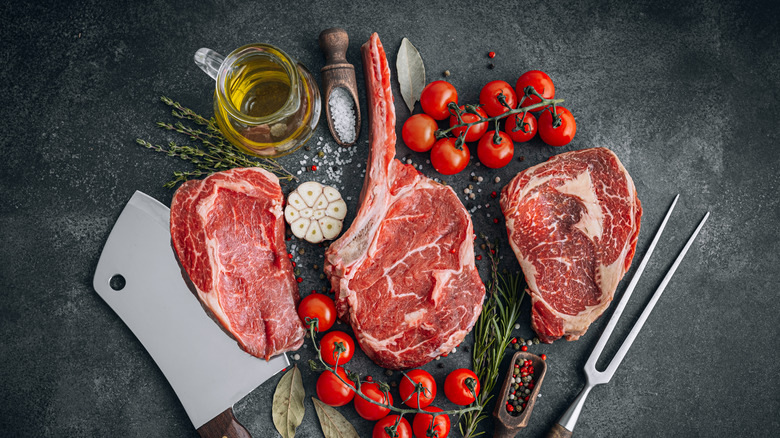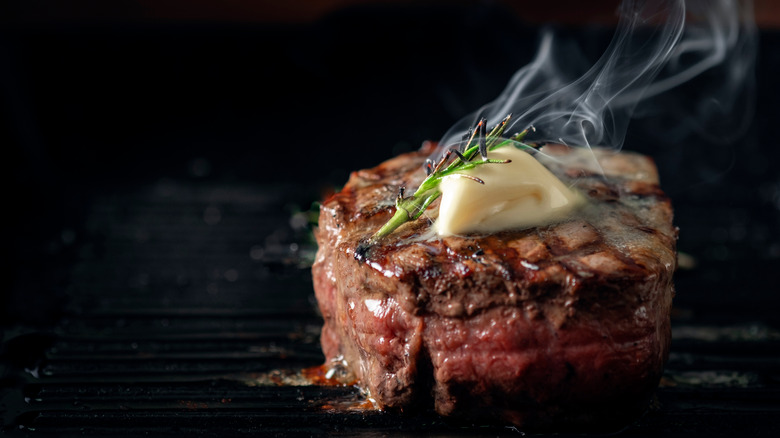The Main Factor That Dictates Whether Your Steak Will Be Tender Or Tough
Making a steak for dinner or several for a crowd is a fulfilling job. Most people are impressed with a perfectly cooked steak, and for those who enjoy it, steak is the ultimate dinner-time treat. It's also a little stressful when you're the one in charge of choosing the right cut of steak and cooking it to perfection. How do you decide which cut is best?
There may be more cuts of steak than you realize. According to Restaurant Licks, there are a whopping 17 different types of steak, including some popular cuts such as ribeye, filet mignon, T-bone, and flank steak. Some are best when cooked in dishes or in a slow cooker, while other cuts are ideal to throw on the grill or cook in your cast iron skillet.
No matter which steak you choose, it only makes sense that you want the steak to turn out tender. No one enjoys a tough piece of meat. There are a few things that can affect the way your steak turns out, including the cooking methods used. However, before you even get the steak home, one factor has already determined the tenderness of your steak.
Tender vs. tough
If you've chosen a tender piece of meat only to find that your steak is chewy when you bite into it, then it may be your cooking method. Overcooking or undercooking both affect the rendering of the fat in your steak and if not done properly, a good steak is ruined. However, to give yourself the best head start, pay attention to where your steak is cut from.
Chophouse Steaks explains that the preferred cuts of steak, such as a filet from the loin or a sirloin from the back, are cut from areas in the cow that aren't hard at work during their lifespan. It's best to choose beef from the "lazy" muscle places. The harder a muscle works, the tougher the beef gets. Fatty areas with muscles that aren't quite as active are more tender. The tougher cuts are usually cheaper; this includes a round steak or flank steak, as well as skirt and hanger steak. They come from areas on the cow that help the cow's body to walk around and graze, such as the legs and abdomen.
Cheaper cuts are of course the tougher pieces of meat, but there's no need to avoid them. They just need to be cooked differently than the tender filet mignon that cooks within minutes on the grill or stovetop.

